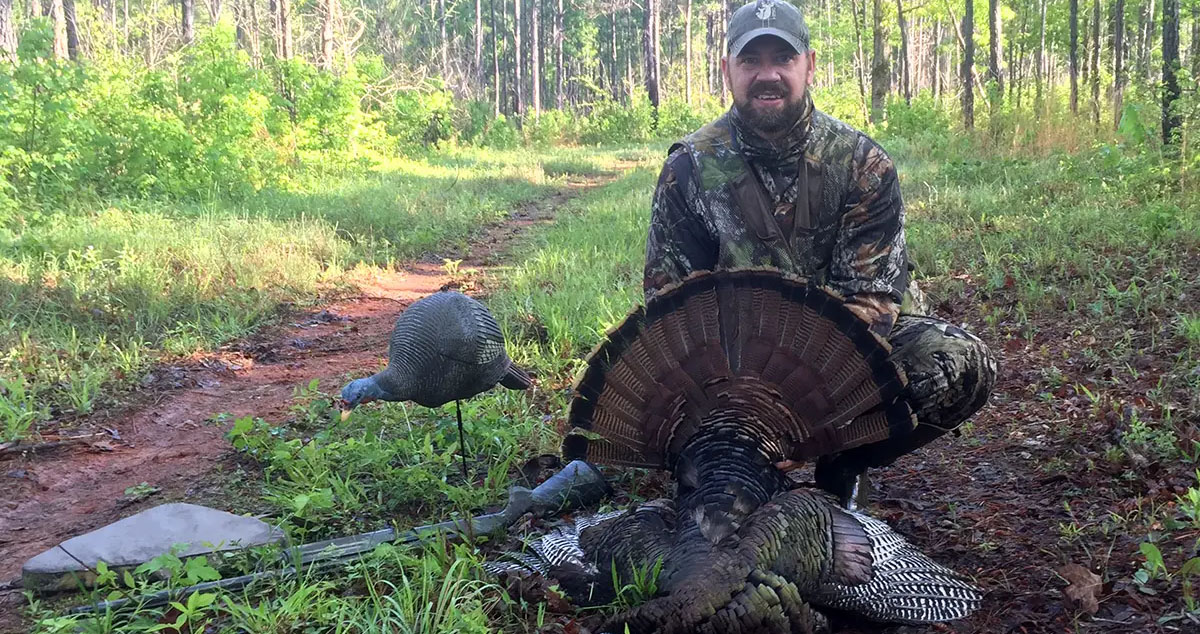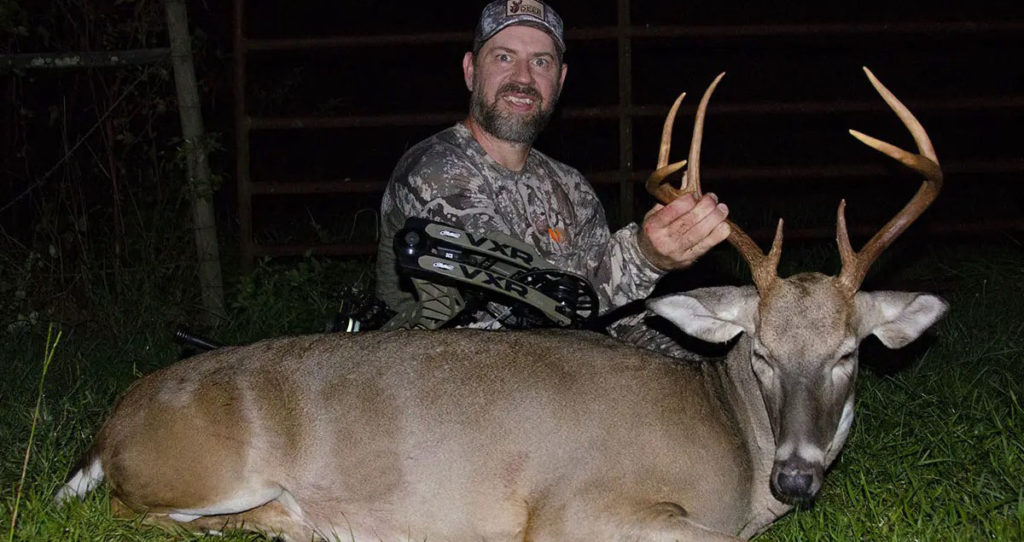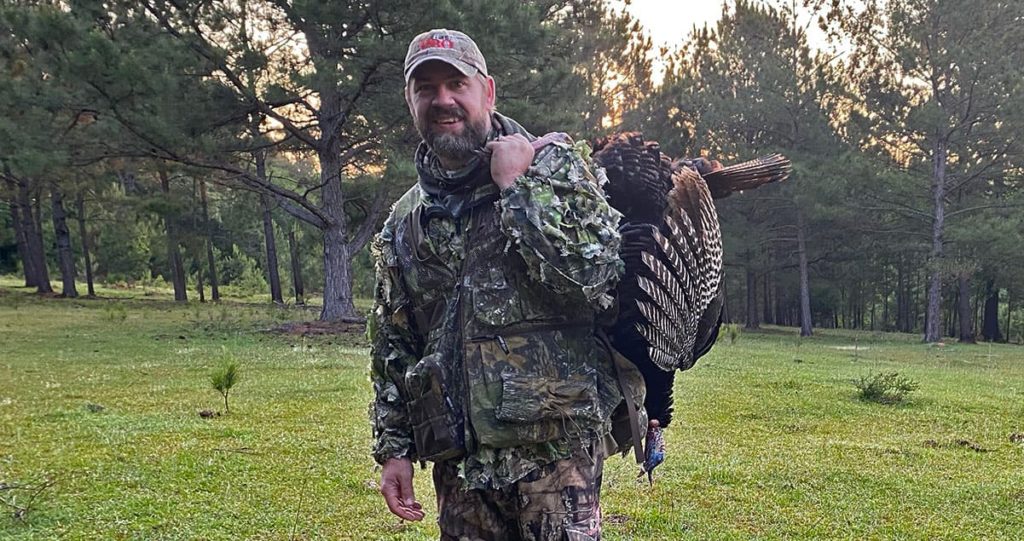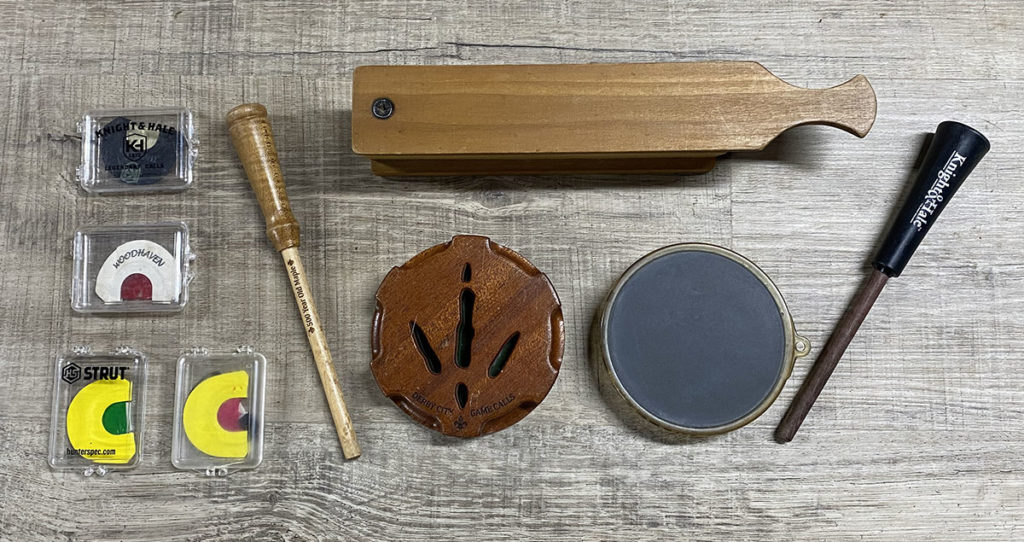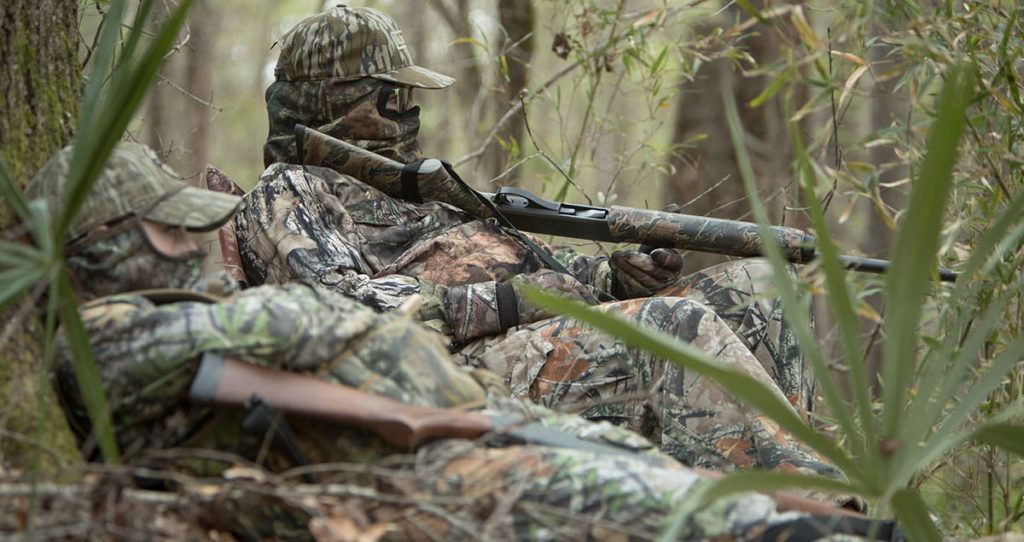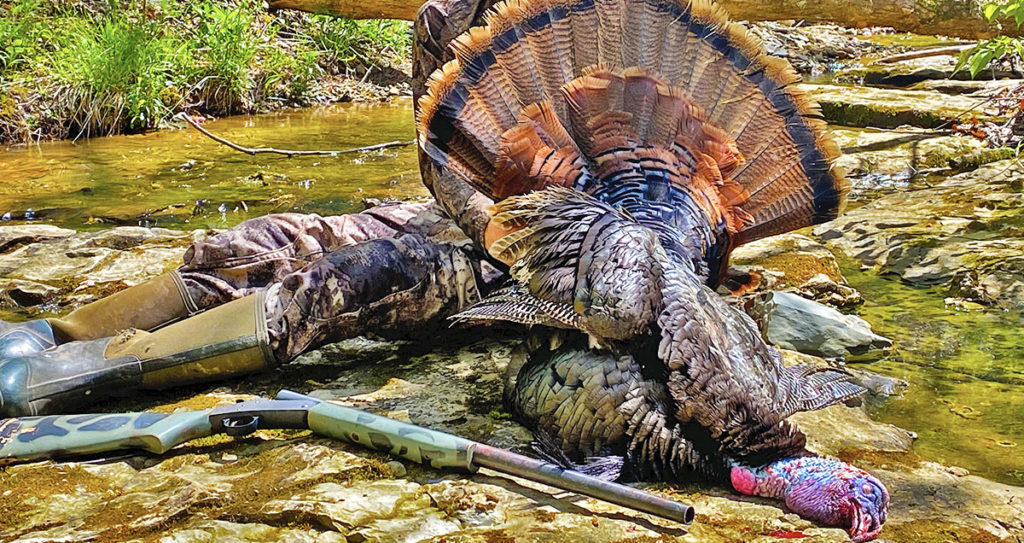Turkey hunting can be tough even on quality private land, but when you throw in the pressures of public land hunting, it can seem almost impossible to put a big gobbler in your turkey vest.
Through years of working on and hunting various wildlife management areas (WMAs) across the southeast, I’ve been fortunate enough to notch a few public land turkey tags.
And while I’m far from a turkey hunting expert, I’ve gained enough experience and knowledge over the years to be able to pass along a few tips and tricks that should help a new hunter increase his or her odds of success.
Here are the seven public land turkey hunting tips that I’ll be covering in depth below.
- Know the rules where you’ll be turkey hunting
- Scout the area
- Get off the beaten path
- Hunt weekdays when possible
- Hunt late mornings and afternoons
- Patience is key
- Adjust your calling to the hunting pressure
1. Know the rules where you’ll be turkey hunting
I know, I know. This is a no-brainer. But as someone who spent over 10 years working on public hunting lands, I can tell you it isn’t. Far too many hunters head out to turkey hunt public land without having a good grasp on the specific rules and regulations for the property they are hunting.
In some states — like where I live in Georgia — every WMA has specific season dates and regulations that can differ from the statewide season. There are also rules regarding camping, the use of ATVs, how late in the day you can hunt, where you can and can’t drive, and much more.
The last thing you want to happen during turkey season is to end up on the wrong side of the game warden.
To avoid that uncomfortable situation, you can simply pick up a copy of your state’s hunting regulations and familiarize yourself with all the rules regarding hunting on public land, with an emphasis on the specific tracts you plan to hunt.
2. Scout the area
This one may seem obvious, too. But once again, I know from experience that many hunters don’t take the time to get out before opening day to scout for turkeys. Don’t be that guy (or girl).
While I’m not a fan of getting up early when I’m not actually hunting, the time spent listening for gobbles, locating roost sites, and learning the turkey’s patterns can drastically improve your odds of success.
Don’t assume just because the birds were in an area last spring, or during deer season, that they’ll still be hanging around during turkey season. Changes in food sources, habitat, and hunting pressure can all have significant impacts on where turkeys will spend the majority of their time.
Specifically, I recommend carving out multiple mornings prior to turkey season to get out on the public land before daylight to listen for turkeys gobbling. Take note not only on where they’re gobbling on the roost, but also where they go after flydown. If you’re having trouble getting on any gobbling birds, stay mobile and keep moving. It only takes locating one talkative bird to put you in a great position on opening day.
In addition to making note of where the birds are, also take time to read the terrain. Where are the birds traveling, and how would you approach them in a hunting situation? The more you understand the lay of the land, the better your odds of getting into shotgun range of a gobbling bird.
Resist the urge to call to the birds. While it’s okay to blow an occasional locator call, I don’t recommend using any type of turkey call. For one, it’s illegal in some states to do so prior to season. And two, you risk educating the birds before opening day ever gets here.
Your only objective at this point is to gain an understanding of where the birds are roosting, as well as where they’re feeding, strutting, and hanging out during the day.
3. Get off the beaten path
While this is not new advice for most public land turkey hunters, it’s advice that is obviously seldom heeded. That became evident when wild turkey expert, Dr. Michael Chamberlain, shared some of his research on turkey hunting pressure. The research not only involved GPS-tracked birds whose every move could be monitored, but it also gave public land turkey hunters a GPS unit to track their movements as well.
What they found was that the turkey hunters had a very high affinity for the public land roads, and the turkeys did not. It was amazing to see how closely the hunters stayed to the closed roads, and how the turkeys completely avoided these areas to stay alive.
“Hunters in this study moved about 60 yards each minute, and on average they were only 100 yards from a road,” said Chamberlain in one of his ‘Turkey Tuesday’ Facebook posts. “And, 40% of all hunter locations were less than 30 yards from the nearest road (main or secondary).
On average hunters were less than 500 yards from main roads but only 125 yards from secondary roads that allowed foot traffic only. In other words, most hunters never left sight of an access road during their hunt.”
The take home message is to get off the beaten path to find public land birds, and don’t assume that just because you don’t hear any gobbling doesn’t mean birds aren’t in the area.
4. Hunt weekdays when possible
Most public land birds are killed on the weekend. That’s not because weekend hunting is better or more productive, though. It’s because the weekend is when most public land hunters are in the woods. If you want to get away from the pressure and increase your odds of success, carve out some weekdays to turkey hunt.
I understand that not everyone has the luxury of being able to take off on weekdays to hunt, so I would encourage you to hunt when you can. But if you do have a flexible schedule, take advantage of weekday hunting opportunities.
5. Hunt late mornings and afternoons
One turkey hunting trend I quickly discovered when I started working on public land was that even on a busy WMA, most turkey hunters were gone by 10 a.m. What I also noticed was that I would often encounter gobblers strutting in the fields midday. They obviously knew the threat was gone.
So while I’m not advocating skipping traditional morning hunts, what I do recommend is sticking around a little longer than everyone else. Or maybe even taking a break to hit the local Waffle House late morning, then returning midday or early afternoon to get back after them.
Don’t expect to hear a lot of gobbling, but if you do get one gobbling, the odds of calling him in are in your favor. Chances are he lost his hen at some point that morning, and he’s looking for a new companion.
Even if they aren’t gobbling, though, use the next tip below and have some patience. Set up in an area you know turkeys frequent (based on your previous scouting trips), set up, and do some occasional light calling. Remain as still as possible, because there’s a good chance if a gobbler does come in, he will do so silently. Be ready.
6. Patience is key
When it comes to public land turkey hunting — or just turkey hunting in general — patience is key. Not only patience with the birds, but also patience with the other hunters around you. If you hunt public land long enough, someone is going to beat you to a spot, walk in on you, or cut off a bird that you’re working. It sucks, but it’s just a price you pay to hunt public land.
My best advice is to just mentally prepare for it, and when it does happen, chalk it off as part of the experience and move on. Getting upset won’t help the situation, and it’s definitely not worth getting in a fight over.
In addition to patience with other hunters, you’ll also need patience with the birds. Public land turkeys see and hear a lot. They aren’t as likely to come charging into a few yelps and a hen decoy as they might on unpressured private land.
Research has also shown that public land pressure appears to quickly shut down gobbling activity.
“In the absence of hunting activity, gobbling ramps up in March [at the study site], peaks when hens enter into the laying and early incubation periods, and then very slowly declines – but activity in May equals that in March,” said Chamberlain. “The take home is, wild turkeys don’t ‘gobble out’ early in their breeding season. Rather, gobbling declines when we remove vocal birds and pressure other birds which results in them gobbling less – and sometimes much less.”
On many of the WMAs I hunt, the birds will often gobble good for you on the limb, but once their feet hit the ground, they have a tendency to get tight-lipped. Don’t let that discourage you.
Give public land birds plenty of time to work their way into you. A good rule of thumb is, when you think it’s time to get up and leave, give him another 15-20 minutes. I can’t tell you how many times I’ve given up on a bird that went quiet only to stand up and hear that dreaded putt-putt-putt.
I’m not saying you need to just set up in a spot first thing and wait the turkeys out like you’re deer hunting. I like to walk a lot until I can finally strike up a bird. But eventually, if I just can’t get anything going, I’ll move to an area I know birds use, call occasionally, and give them time to show up.
7. Adjust your calling to the hunting pressure
For years I recommended and practiced soft, infrequent calling when hunting public land turkeys. And while that often worked for me over the years, I think I was oversimplifying my approach and likely missing opportunities to call in killable birds.
There’s certainly a time to call softly to pressured birds. But there’s also a time to call loud and aggressive. It really depends on the mood of the bird you’re working. What may bring him in on a string today may have him running for the hills tomorrow.
Unfortunately, learning to gauge the temperature of a public land gobbler takes time and experience. I typically start calling softly. If he’s gobbling at every call — or better yet, cutting me off — then I slowly get more aggressive with my calling.
If he’s only gobbling occasionally at my calling, then I will typically back off, sometimes going completely silent. Sometimes you’ll get it right and call the bird in, and many times, you won’t. But you should learn something every encounter you have.
The take home here is to use the gobbling intensity of the turkey to dictate how aggressively you call, and adjust your strategy as conditions change.
Final Thoughts
Public land turkey hunting is as challenging as it gets, but when things finally come together, there is nothing more rewarding.
If you’re preparing for your first season of hunting public land, or maybe you’ve just been struggling to find success. Either way, incorporating these seven public land turkey hunting tips and tricks into your strategy should shorten the learning curve and help you notch that turkey tag sooner than later.
Good luck this season!

